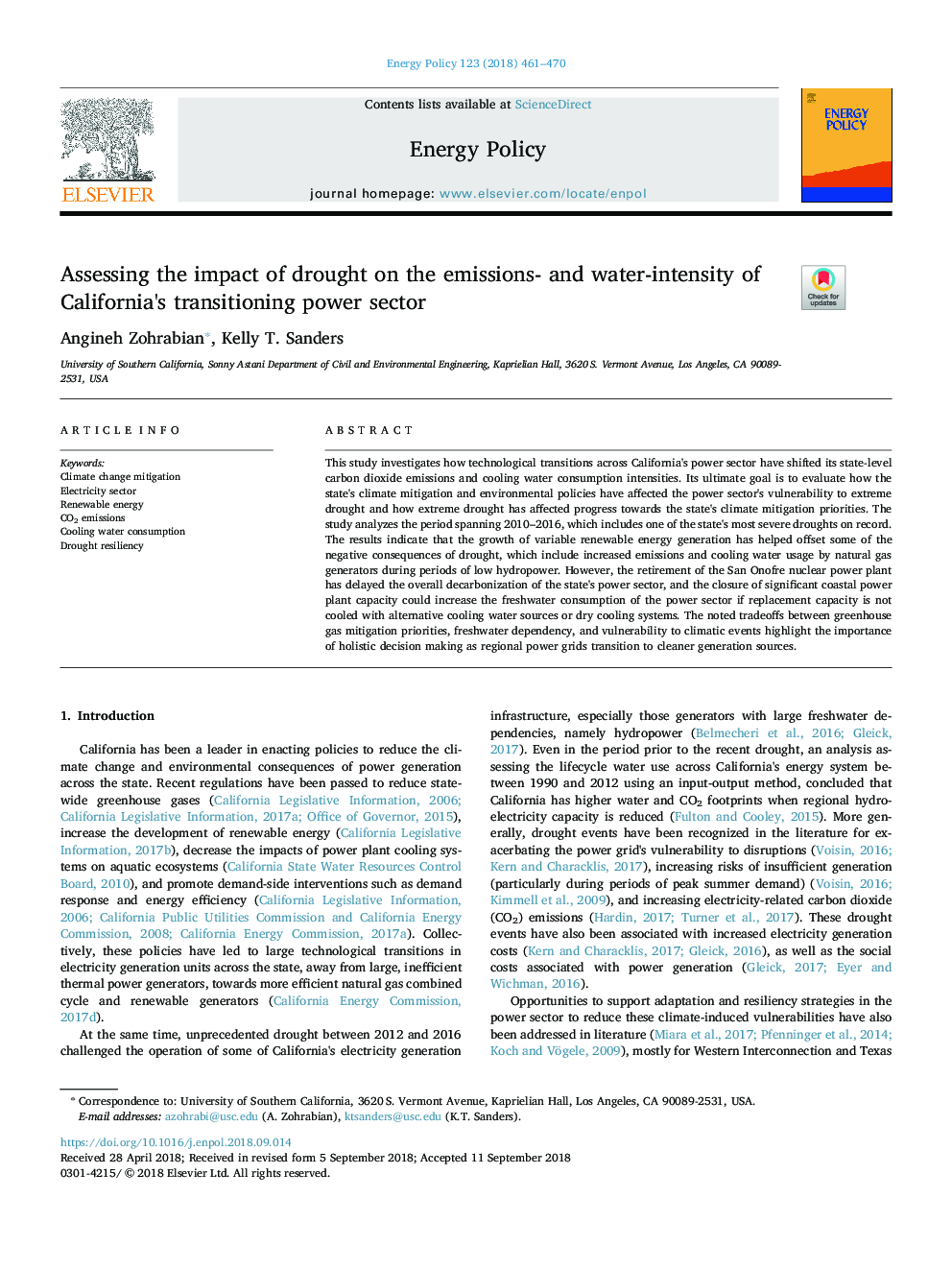| Article ID | Journal | Published Year | Pages | File Type |
|---|---|---|---|---|
| 11032291 | Energy Policy | 2018 | 10 Pages |
Abstract
This study investigates how technological transitions across California's power sector have shifted its state-level carbon dioxide emissions and cooling water consumption intensities. Its ultimate goal is to evaluate how the state's climate mitigation and environmental policies have affected the power sector's vulnerability to extreme drought and how extreme drought has affected progress towards the state's climate mitigation priorities. The study analyzes the period spanning 2010-2016, which includes one of the state's most severe droughts on record. The results indicate that the growth of variable renewable energy generation has helped offset some of the negative consequences of drought, which include increased emissions and cooling water usage by natural gas generators during periods of low hydropower. However, the retirement of the San Onofre nuclear power plant has delayed the overall decarbonization of the state's power sector, and the closure of significant coastal power plant capacity could increase the freshwater consumption of the power sector if replacement capacity is not cooled with alternative cooling water sources or dry cooling systems. The noted tradeoffs between greenhouse gas mitigation priorities, freshwater dependency, and vulnerability to climatic events highlight the importance of holistic decision making as regional power grids transition to cleaner generation sources.
Related Topics
Physical Sciences and Engineering
Energy
Energy Engineering and Power Technology
Authors
Angineh Zohrabian, Kelly T. Sanders,
